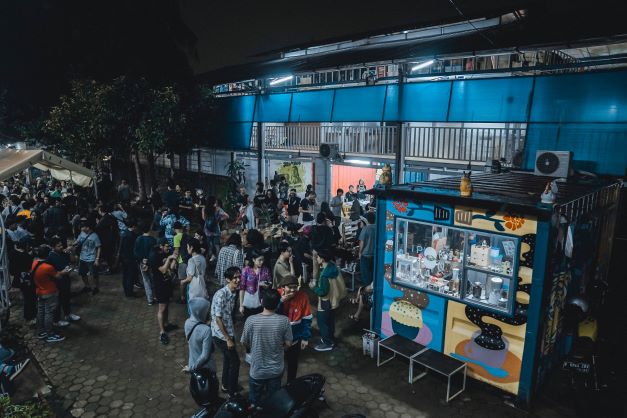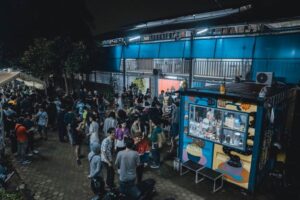Pilot study
"Collective Art Practice and Society in Indonesia"
R4 2-2 (R4 AY2022)
| Project Leader | Hatori Yuuki (Kyushu Geibun-kan) |
| Research Project | Collective Art Practice and Society in Indonesia |
| Countries of Study | Indonesia, Germany |
Outline of Research
This research investigates Indonesian collective art activity, which has been sporadically seen since the end of World War II, and its historical continuity in relation to Indonesian society. Specifically, I consider the historical and social significance of collective art activity by comparing the following: the Gerakan Seni Rupa Baru (or the New Art Movement), an art collective that has been active since the 1970s, and “documenta 15,” an international exhibition of contemporary art directed by a collective in Indonesia known as “ruangrupa.”
Purpose of Research, Its Significance and Expected Results, etc.
The purpose of this research is 1) to identify the cultural and societal factors that triggered the historical emergence of collective art activity in Indonesia, and 2) to examine what changes the activity generated in the local society. In addition to the “what,” the study will also investigate how the activity contributed to the development of the modern art perspective, which emphasizes originality and uniqueness of individuals.
The project will employ interdisciplinary methodologies from both art history and area studies to investigate “collectiveness” in Indonesian art and its relation to society, something not done before in the discipline of Indonesian art history. The study will explore the significance of Indonesian collective art activity to art history in general, as well as its relationship to art practice in Indonesia. Because art is typically regarded as high culture, scholars have not paid much attention to its relationship to the local society in Indonesia. Thus, by revealing their close relationship, this research attempts to demonstrate the importance of Indonesian art to area studies research. As Indonesian art collectives have rarely received academic attention in the disciplines of art history and area studies thus far, this point alone should validate this research as a valuable contribution to current interdisciplinary research on Southeast Asia.
Analysis of collective activity in the history of Indonesian art will present scholars with an opportunity to review global and postcolonial issues of the discipline from a non-Eurocentric perspective. Therefore, the research will illuminate new aspects of culture and society in Indonesia in an unprecedented way. This research is expected to reveal such aspects of the discipline by investigating the role of the collective art activity in Indonesian society. It will also present a fresh viewpoint of Indonesian art to the discipline of Indonesian area studies.




